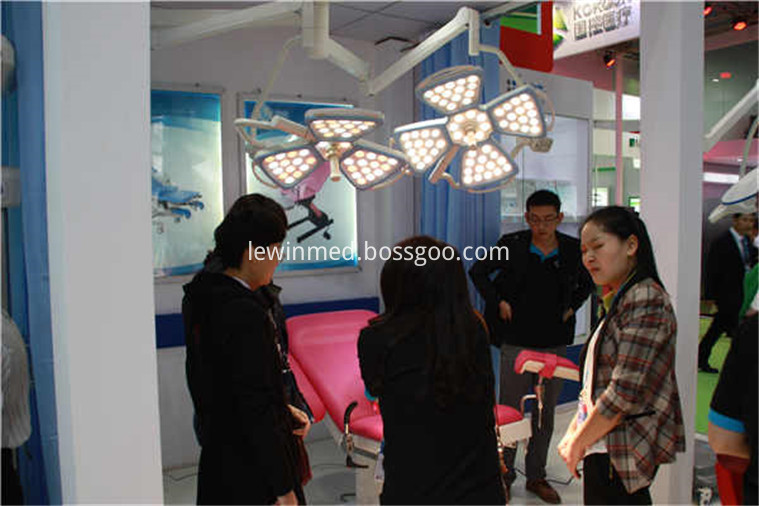Cow infertility prevention methods
1, ovarian function is still
The highest incidence of ovarian infertility in ovaries is one of the most common diseases of inverted cows.
Symptoms: 1) Dark estrus, ie no estrus, but ovulation and ovarian cycles. The rectal examination of the ovary was similar to that of the normal cycle cows, with the right touching the follicles and the corpus luteum. 2) No estrus performance, no ovarian cycle and no ovulation. Rectal examination of the ovarian volume is small, no ovarian follicles and no corpus luteum, but the texture is normal, elastic.
Treatment: 1) PMSG intramuscular injection 1000 ~ 1500IU. 2) The ratio of FSH and LH is 4:1 with intramuscular injection, 200 IU and 50 IU, respectively. 3) LH-A3 treatment of recessive estrus. 4) Estradiol 6 ~ 8mg intramuscular injection, treatment of recessive estrus.
2, lasting yellow body
The corpus luteum during pregnancy or estrous cycle does not disappear beyond normal time and is called persistent corpus luteum.
Symptoms: Due to the presence of the corpus luteum, the ketones are continuously secreted, and the estrus cycle is stopped clinically and is not estrus. Rectal examination: There is a large or small corpus luteum on the surface of the ovary and protrudes from the surface.
Treatment: Cloprostenol is the preferred hormone for the treatment of persistent corpus luteum, 0.4 to 0.6 mg, and estrus begins 2 to 3 days after treatment.
3. Ovarian cysts are divided into follicular cysts and corpus luteum cysts.
Symptoms of follicular cysts: persistent estrus, continuous discharge of mucus, quantity, hi to climb across; disturbed, screaming, loss of appetite; vulva redness, labia edema. Rectal examination: Ovaries increase, there are larger non-ovulated follicles in the ovary, and the follicular wall is thick, full, with a sense of volatility.
Treatment: Follicle cyst with 1) HCG 5000 ~ 10000IU intravenously, together with progesterone, 100mg daily for 5 days. 2) LRH-A320ug, progesterone 100mg, intramuscularly, used for 5 days. 3) Ovariectomy directly draws follicular fluid and injects the drug into the ovaries.
The symptoms of corpus luteum cysts: The corpus luteum cyst is formed by the lutealization of the anovulatory follicular wall epithelium, and clinical manifestations are mainly oestrus; rectal examination: luteinized cyst is mostly one, the size is similar to follicular cyst, cyst wall is thick, slightly There are fluctuations.
Treatment: basically the same with persistent corpus luteum, the first choice of chlorpronol, 0.4 ~ 0.6mg.
4, ovulation disorders
Ovulatory disorders include poor follicular maturation, delayed ovulation, and failure to ovulate.
Symptoms: The duration of estrus is too short, only a few hours; estrus duration is too long, more than 35 hours (buffalo is more common); mucus changed during estrus becomes translucent or cloudy for a long time; rectal examination: ovary volume changes little Small follicles and thick follicle walls. Low fertility rate during mating.
Treatment: 1) In the first time of breeding or insemination, intramuscular injection of ovulation 3 (LRH-A3) 40 ~ 50ug. Or HCG2500~5000IU. Or LH200~300IU. 2) Take repeated insemination, two intervals of 8 to 12 hours.
5, endometritis
Endometritis is one of the types of palace inflammation. Can be divided into two kinds of acute and chronic, clinically, chronic endometritis is more common.
Symptoms: Severe endometrial inflammatory cycle is mostly abnormal, or prolonged or suspended sexual cycle; uterine volume increased to varying degrees; vulva discharge inflammatory exudate, some estrus excretion, and some intermittent discharge; a history of difficult pregnancy; Severe later often leads to hardening of the uterus and loss of elasticity.
Treatment: The principle of chronic endometritis is to clean the uterus, eliminate inflammation, and achieve the purpose of purging the uterus through the treatment of disinfectants. Two to three days after the estrus was stopped, 500-500 ml of 4-5% sodium chloride solution was used. Or perfusion with 0.3% potassium permanganate solution 500. Or 500% perfusion with 0.1% compound iodine solution, intrauterine administration the next day, 15 tablets of oxytetracycline or 3 grams of nitrofurazone or 3 grams of ciprofloxacin plus 100 milliliters of water. Four doses were repeated for four days and used three times. Since the pathogens of chronic endometritis are relatively intractable, it is necessary to repeat the treatment of two periods of love. Until the third season of mating, the first 6-8 before the first intrauterine injection of physiological saline penicillin solution (1.6 million units of penicillin, saline 100ml) to clear the palace, the effect is better.
For flower type operation lamp, it has two types of lamp head, one is big one, it has 64 LED bulbs which from Germany osram, another small one, it has 45 LED bulbs, also from Germany. the surgical lamps bulb can last long for 8 hours, that is one of the reasons which our surgical lamp has low maintainance rate. for Double Dome Surgical Lamp, can constituted by one big+one big lamp head, one big+one smal lamp head and one small+ one small lamp head, it can be choosed depends on users' requirment;
the flowet type OT lamp has functions of Bright and Uniform illumination; Outstanding color temperature control performance; Supramaximal effective light field;Electric focusing system;

Double Dome Flower Ot Lamp,Double Dome Ot Lamp,Double Dome Operation Lamp,Double Dome Surgery Light
Shandong Lewin Medical Equipment Co., Ltd. , https://www.operatinglight.nl